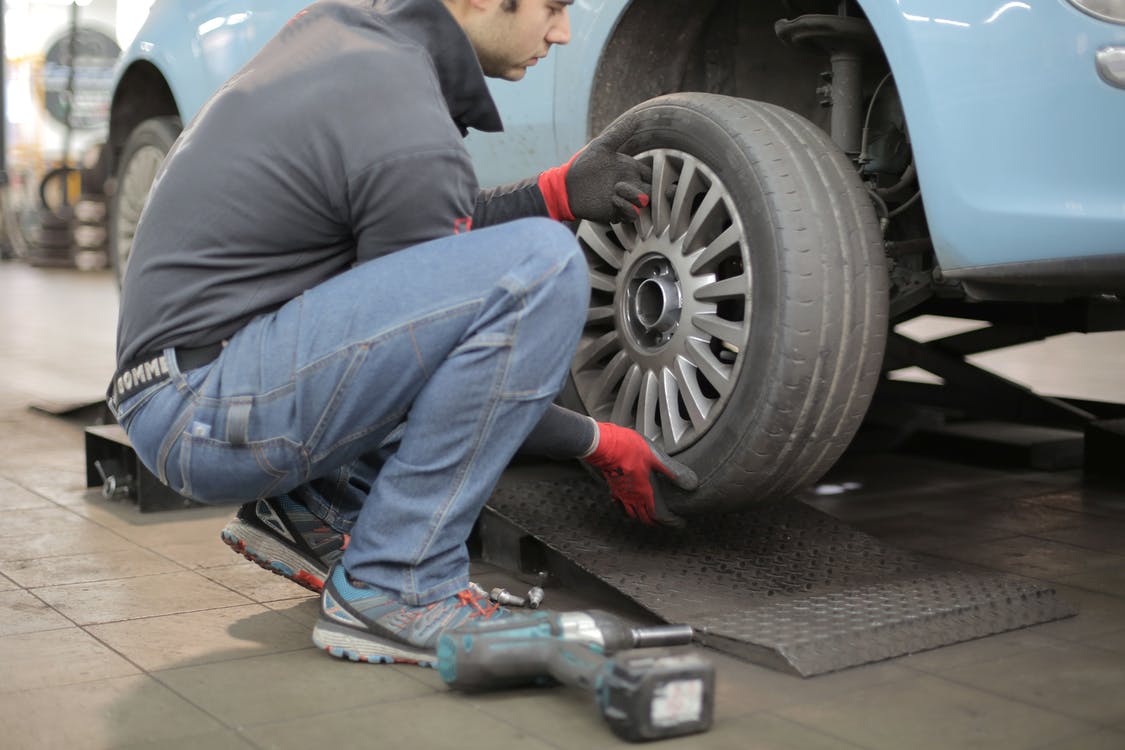During the extreme summer and winter conditions, it’s important to have good brakes. Poor quality brakes or unmaintained brakes decrease the longevity of the vehicle but can also contribute to dangerous accidents.
While your brake system might look complex, it’s actually relatively easy to maintain by yourself. The master cylinder, brake pads, brake lines, calipers and rotors are important parts of any car’s brake system. These are the parts that need to work and run properly. If they need repair, however, then you need to take your vehicle to a mechanic to get it sorted.
Let’s check out a few ways to maintain your car brakes.
But before getting into it, you need to know how to get access to the brakes. Here is a quick overview of how you can do that.
- Use the jack and the stand to lift and secure the vehicle
- Attach a wheel chock to keep it stationary
- Use a lug wrench to remove the nuts
Once the above steps are done, you can clearly see the brake pads and rotors. If you find these steps to be too overwhelming, then make sure to take your vehicle to a car service centre. Explain to them the problem and what you want them to do.
Check the brake pads and rotors: The brake pads and rotors are easily perishable. Therefore, they need extra maintenance. The friction between the tyres and the brakes wears down the pads quickly. Hence, the quality and depth of the pads need to be inspected to ensure good resistance. If you smell the burning odour from the tyres, that means, it’s time for new brake pads and rotors. There are ways you can change the brake pads and rotors at home, but if you are unsure of the process, then it’s better to take your car to the auto service centre to get assistance.
Look over the brake fluids: These fluids are an important component in the car as it’s the bridge between you and the car’s braking system. It’s necessary to maintain the brake fluids as it attracts moisture which can damage the braking system. The moisture causes corrosion on the metal components, which then reduces the boiling point of the fluid. This affects the brakes. For every 25,000 miles, the fluid needs to be changed.
The brake lines: Small air pockets in the brake lines need to be removed for better efficiency. The bleeding process helps remove the air from the brake line by adjusting the bleeder valve.
Upgrade brakes: It’s vital to replace or upgrade the brake parts whenever necessary. Parts like disc brakes which are often prone to damage. Switching to ceramic pads instead might increase the longevity and improve the performance of your brakes.
Choose to
add autonomous emergency brakes: AEB or auto emergency braking system in vehicles helps in stopping
the car if it senses an obstruction like a vehicle, person or a cyclist. AEB is
important to be included in all the vehicles so that there are fewer accidents.
There are three main categories of AEB.
- City Speed System- These systems avoid or help in preventing
accidents within the city. These systems are only working when the other
vehicles stop suddenly in front but don’t work when a pedestrian walks by suddenly. These city speed systems
use a laser sensor to detect obstacles. Unfortunately, these
laser systems can be hindered during foggy or rainy weather.
- Highway
Speed Systems- This system
utilises long-range radar to scan vehicles that are ahead of you. These radars do not get affected by the
changing weather. The highway speed systems detect walking pedestrians or when a car is changing lanes.
- Pedestrian
and Cyclist Detection System-
This system uses radar and camera to detect pedestrians through their shape and
characteristics. According to the pedestrian’s movement, the vehicle calculates
if there's a possibility of collision with an opened
car door.
Final Thoughts:
The brakes of a vehicle are extremely sensitive parts of the car and need extra care. Before you go out driving, it’s good to think about the condition of your brakes. It’s also a good idea to check the condition of your brakes after you have finished a long drive.










 Erika Rhein, the contributing author and the professional blogger by profession. With years of experience, I now focus on writing blogs on varied niches. Being a research enthusiast, I like to provide my readers with the useful and informative articles on the different topics they are looking for. I aim to create a difference through my writing.
Erika Rhein, the contributing author and the professional blogger by profession. With years of experience, I now focus on writing blogs on varied niches. Being a research enthusiast, I like to provide my readers with the useful and informative articles on the different topics they are looking for. I aim to create a difference through my writing.
0 Comments